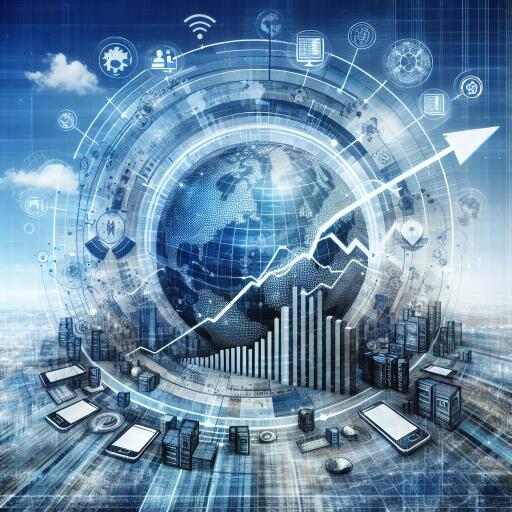Digital Economy in the Philippines Surges to P2 Trillion Mark in 2023
In a significant development for the Philippine economy, the nation’s digital economy has seen a substantial growth, reaching P2.05 trillion in 2023. This figure represents an impressive 8.4 percent contribution to the Philippines’ gross domestic product (GDP), marking a notable uptick from the previous year. The latest figures from the Philippine Statistics Authority (PSA) highlight a robust 7.7 percent growth from the P1.90 trillion valuation in 2022, underscoring the accelerating pace of digital transformation in the country.
The digital economy encompasses a broad range of digital transactions including, but not limited to, digital-enabling infrastructure, e-commerce, digital media/content, and government digital services. Noteworthy is the inclusion of government digital services as a newly tracked component within the sector, reflecting the expanding scope and significance of digital transactions in governmental operations.
A detailed breakdown provided by the PSA showcases that digital-enabling infrastructure commands the lion’s share of the digital economy, accounting for P1.70 trillion of the total valuation. Within this domain, telecommunication services, professional and business services, and the manufacture of computer, electronic, and optical products are the top contributors. They hold respective shares of 32.9 percent, 30.1 percent, and 17.1 percent to the digital economy, cementing their pivotal roles in supporting and advancing the digital landscape of the Philippines.
E-commerce emerges as another critical component, constituting a 14 percent share of the digital economy. Alongside, digital media/content contributes 2.9 percent, and government digital services make up a nascent yet vital 0.2 percent of the sector. These figures illustrate a diverse digital ecosystem that is thriving across multiple fronts, from online commerce and digital content to the digitization of government services.
The PSA’s findings also shed light on employment trends within the digital economy, revealing that as of 2023, a total of 9.68 million individuals are employed across the sector. The distribution of employment across the different sub-sectors is telling—e-commerce leads with a dominant 87.3 percent share of employment, indicative of the boom in online shopping and the proliferation of e-commerce platforms. This is followed by digital-enabling infrastructure (11.5 percent), digital media/content (1.1 percent), and government digital services (0.1 percent).
The continued expansion of the Philippine digital economy is a testament to the country’s growing prowess in the digital arena. With a significant increase in valuation and employment, the digital economy stands as a vital pillar supporting the Philippines’ overall economic growth and development. As digital technologies continue to evolve and penetrate different sectors, the prospects for the Philippine digital economy appear more promising than ever.
